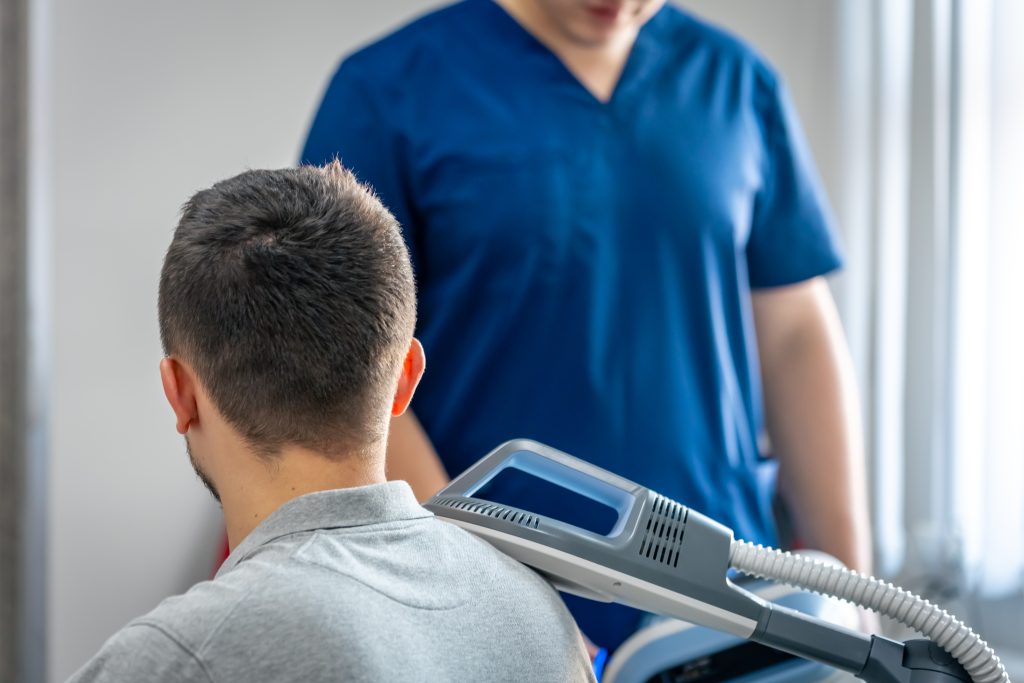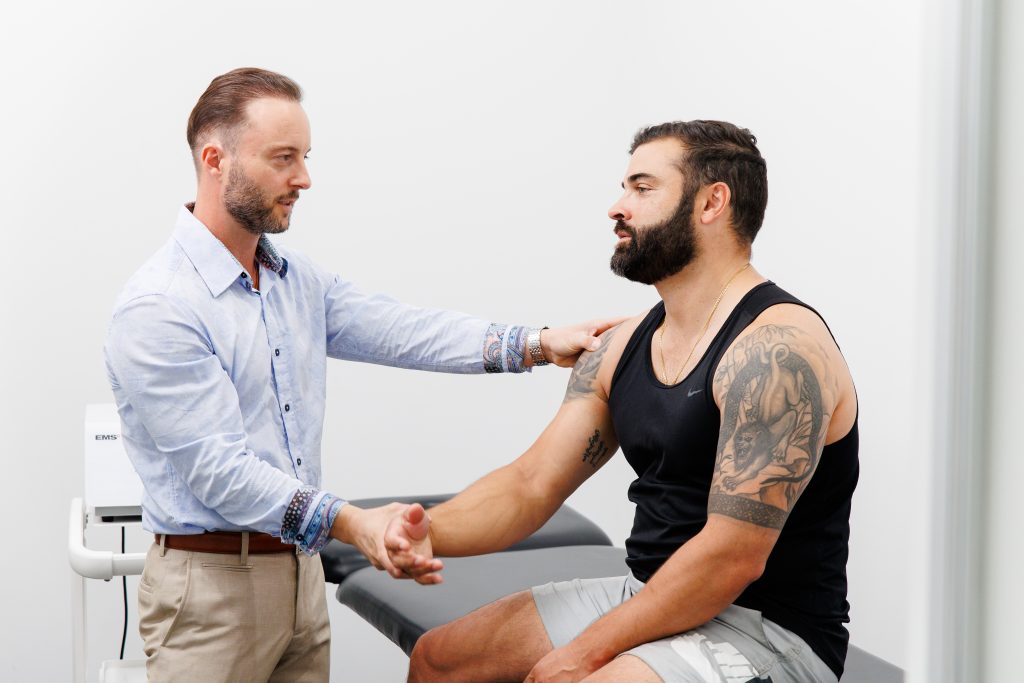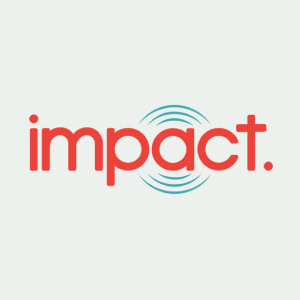May 23, 2024
By Nick Lorem
What Not to Do After a Shockwave Therapy Session: Essential Tips

Shockwave therapy is a non-invasive medical treatment that uses sound waves to stimulate the body’s natural healing process and support blood flow to injured tissues.
Clinically referred to as extracorporeal shockwave therapy, it is sometimes included in a management plan for chronic tendon conditions such as plantar fasciitis. It may also be considered for issues like Achilles tendinopathy and other causes of persistent heel pain.
While sessions are straightforward, knowing what not to do after a shockwave therapy session may help minimise discomfort and assist the recovery process.
Post-treatment decisions may influence how your body responds. Following professional guidance may help reduce the likelihood of side effects and support your overall treatment plan.
Each shockwave treatment is planned according to your health, condition, and medical history. Providing accurate information helps your clinician decide if the therapy is appropriate for you.
Aftercare is part of the overall treatment plan and gives your body time to respond to the acoustic waves used during therapy. Outcomes vary between patients. Your practitioner can advise you on the appropriate next steps for your situation.
Summary of the Content:
- Shockwave therapy is a non-invasive approach that uses acoustic waves to support blood flow and tissue response in chronic issues like plantar fasciitis.
- Following advice on what not to do after a shockwave therapy session may help reduce setbacks and support comfort.
- Avoid activities such as running, heavy lifting, or stretching for at least 48 hours to minimise strain on soft or irritated tissues.
- Steer clear of anti-inflammatory medication unless your clinician advises, as it may interfere with the body’s natural healing process after shockwave treatment.
- Report any severe pain, swelling, or unusual changes that occur after sessions. These may require prompt attention or adjustment of your treatment plan.
- Missing appointments or skipping prescribed stretches can slow progress and affect symptom management.
- For plantar fasciitis, maintaining proper hydration, a balanced diet, and regular movement may support your care plan.
- Contact your clinician if discomfort worsens, new symptoms arise, or you’re unsure about how to manage aftercare.
Understanding Shockwave Therapy
Shockwave therapy, also known as extracorporeal shockwave therapy (ESWT), is a non-invasive medical approach used to help manage certain musculoskeletal conditions and chronic tendon-related issues.
It involves a handheld shockwave device that directs focused sound waves into the affected area. This process stimulates the body’s natural healing process and supports blood flow to injured tissues.
This method is sometimes recommended as part of a broader overall treatment plan, especially when many methods have not improved comfort or function.
How Does Shockwave Therapy Work?
Shockwave therapy works by delivering high-frequency sound waves into the targeted area, creating a biological response that encourages the body’s natural processes.
This response may involve:
- Stimulating blood flow:
Increased circulation to the treatment site can support nutrient delivery and assist healthy tissue activity. - New blood vessel formation:
The shockwave device may prompt the development of new blood vessels, improving blood supply in areas with limited circulation. - Supporting collagen production:
The acoustic waves may stimulate collagen production, which is important for maintaining the structure and function of tendons and surrounding tissues. - Reducing localised inflammation:
By influencing cellular activity, shockwave therapy may help reduce localised inflammation, which could ease mild pain or stiffness. - Breaking down calcifications:
In some cases, the waves may disrupt calcium build-up, such as in calcific tendonitis, which may allow improved movement. - Promoting tissue response:
The therapy may stimulate healing responses in injured or overused areas, supporting the body’s attempt to maintain healthy function.
Sessions are typically spaced at weekly intervals. The number required varies depending on individual needs, response, and the musculoskeletal condition being managed.
Conditions Commonly Supported with Shockwave Therapy
Shockwave therapy is sometimes included in a care approach for musculoskeletal issues, especially those linked to chronic overuse, reduced blood flow, or delayed recovery responses.
Some commonly supported conditions include:
- Plantar fasciitis
This condition involves irritation of tissues under the foot, often linked with heel pain, particularly after periods of rest or first steps in the morning. - Achilles tendinopathy
Common in active individuals, this concern affects the tendon at the back of the ankle and may contribute to reduced mobility and discomfort. - Tennis elbow
Often associated with repetitive forearm use, tennis elbow may cause ongoing discomfort and restricted movement in the outer elbow. - Hamstring tendinopathy
This condition may lead to discomfort near the top of the thigh, especially during physical activity or when sitting for long periods. - Knee pain (including patellar tendinopathy)
Tendon-related knee pain may be linked to activity, overuse, or muscle imbalance, particularly in patients who are physically active. - Calcific tendonitis
Calcium deposits in tendons, such as the shoulder, may restrict movement and contribute to discomfort. - Other chronic tendon concerns
These may include issues affecting the gluteal tendons, shoulder tendons, or areas frequently exposed to overuse injury and mechanical strain.
Understanding how shockwave therapy works may help patients follow their overall treatment plan and take an active role in recommended post-session care.
Immediate Aftercare
While extracorporeal shockwave therapy is non-invasive, it can trigger biological responses in injured tissues during the healing process.
These responses may include mild pain, temporary inflammation, or sensitivity in the targeted area. Knowing what not to do after your shockwave therapy session may help reduce setbacks and support comfort.
Your body begins to activate natural processes that support function and comfort. Following aftercare guidance may help align with your overall treatment plan.
Activities to Avoid
Avoiding certain activities after therapy helps protect the treatment area and gives tissues time to respond to the high-frequency shock waves used.
Do not engage in the following activities for 48 hours after your session:
- Running or high-impact activity
These can place stress on the affected area and may increase discomfort, especially if you are managing plantar fasciitis or heel pain. - Heavy lifting or resistance workouts
Intense movements can disturb the healing process and may slow progress in people with chronic tendon conditions or joint pain. - Unsupervised stretching or manual therapy
Even gentle stretching may irritate the treatment site. Always follow your provider’s guidance for returning to normal activities.
Giving your body time to rest supports recovery. This is especially important for patients managing chronic pain.
Medications and Care
Post-session care also includes making smart choices about medication and comfort strategies. Some over-the-counter medications may reduce the body’s ability to stimulate healing.
- Avoid anti-inflammatory medication.
NSAIDs like ibuprofen may interfere with the body’s natural response after shockwave therapy. - Use ice for temporary relief.
If you notice swelling or mild pain, apply ice to the treatment site for 10–15 minutes to manage discomfort. - Monitor for unexpected changes.
If you have a condition such as a bleeding disorder or if anything feels unusual, notify your healthcare provider.
Check with your provider before taking any medications, especially during the first 48 hours after your shockwave treatment.
Follow-Up and Hygiene
Ongoing support is important after the first session. These steps may help support the results of shockwave therapy and protect the treatment site.
- Attend all follow-up appointments.
Follow-ups enable your clinician to monitor changes and adjust your treatment plan based on your response and any new symptoms that may arise. - Keep the area clean and dry.
While no skin is broken during therapy, gentle hygiene supports overall care—especially if there’s visible irritation or sensitivity. - Communicate any concerns.
Let your clinician know if symptoms worsen. This includes pain, redness, warmth, or changes in how the treatment area feels.
Clear communication and appropriate aftercare may support the body’s natural healing process, especially in areas affected by chronic tendon conditions or musculoskeletal discomfort.
Common Mistakes to Avoid After Shockwave Treatment
Shockwave therapy may encourage biological responses in the body. However, certain habits or oversights after sessions can affect recovery or comfort.
Knowing what to avoid may help support injured tissues, especially in cases involving joint pain, plantar fasciitis, or chronic tendon conditions.
Returning to Activities Too Soon
Jumping back into movement too quickly may interfere with the body’s response after exposure to high-frequency shock waves, especially in areas with strain or sensitivity.
Even light activity may irritate tissues if resumed prematurely. This can increase discomfort or slow the body’s natural response to shockwave treatment.
Waiting for your provider’s approval before returning to normal activities is part of supporting the healing process.
Ignoring a Structured Plan
Some patients are given specific stretches, low-load movements, or pacing guidelines. Skipping these may limit the body’s adjustment after therapy.
Structured recovery can be important for conditions such as plantar fasciitis, which involve long-standing tension or inflammation.
These plans often work in conjunction with shockwave therapy to help regulate movement, observe symptom changes, and reduce unnecessary stress on soft tissues.
Overlooking Side Effects
Side effects such as mild pain, bruising, or swelling can occur in some patients after shockwave therapy. These are usually temporary but should not be ignored.
Failing to report symptoms early may delay adjustments that support comfort and safety during ongoing sessions.
People with underlying conditions may experience side effects differently. Inform your provider if anything feels unusual in the hours or days after therapy.
Failing to Share Medical History
Let your provider know about medical conditions such as bleeding disorders, metal implants, or neurological issues before starting your treatment plan.
Certain conditions may affect how the body responds to shockwave treatment, particularly when injured tissues or deeper structures are involved.
Sharing relevant health information allows your provider to adjust your care and reduce the risks associated with high-frequency shock waves.
Missing Appointments
Follow-up visits are important for tracking how the body responds and adjusting the overall approach when required.
Skipping appointments may reduce opportunities to identify progress or consider other care options.
For ongoing issues such as joint pain or chronic tendon conditions, consistent monitoring supports individualised care and informed decision-making.
Promoting Healing and Recovery
Recovery after shockwave treatment continues beyond the clinic visit. Everyday choices may influence how your body responds, particularly in cases of overuse injuries or soft tissue discomfort.
Supporting your body through healthy habits may help ease pain, support tissue adaptation, and assist in the management of plantar fasciitis, heel pain, or tendon strain.
Many patients report that lifestyle adjustments complement their overall treatment plan, especially when paired with professional advice and scheduled follow-up care.
Healthy Lifestyle Choices
What you eat, drink, and do can influence your energy, mobility, and comfort—especially during recovery from musculoskeletal injuries or chronic physical discomfort.
- Maintain a nutrient-rich diet.
Whole foods that support circulation and inflammation balance may assist the body during adaptation to shockwave therapy or other components of care. - Stay well hydrated.
Drinking water regularly supports circulation, energy, and focus, particularly during physically or mentally demanding phases of recovery. - Resume gentle movement when approved.
Light walking or stretching, when guided by your clinician, can support mobility without overstressing injured tendons or irritated soft tissues.
These practices may complement therapy and support the body’s natural healing process during recovery.
Avoiding Harmful Habits
Avoiding certain behaviours may support the body’s ability to manage symptoms and reduce potential delays in recovery after shockwave treatment.
- Avoid smoking.
Smoking can limit circulation and oxygen delivery, which may affect soft tissue health, particularly when managing an overuse injury. - Limit alcohol.
High alcohol intake may disrupt sleep, increase inflammation, or reduce concentration, which can interfere with recovery. - Avoid restrictive dieting.
Very low-calorie diets may limit nutrients that support energy, hormone balance, and tissue response during rehabilitation.
Addressing these habits may strengthen the impact of your overall treatment plan and support the body’s ability to stimulate healing.
Rest and Stress Management
Rest and stress regulation are important parts of recovery. Your body needs time to focus its energy on healing and adaptation.
- Prioritise quality sleep.
Deep, uninterrupted sleep supports immune balance, mental focus, and physical recovery during rehabilitation from musculoskeletal injuries. - Use simple stress-management strategies.
Gentle breathing, stretching, or mindfulness techniques may help reduce tension and improve your ability to manage discomfort or setbacks. - Monitor your limits.
If you experience increased pain after activity, consider reducing your effort. Many patients find pacing themselves supports comfort during each stage of recovery.
Engaging in your health journey may support positive outcomes, particularly when combined with clinical advice and a structured care plan.
When to Contact A Healthcare Practitioner
Although shockwave therapy is sometimes used as part of a care approach for conditions like plantar fasciitis or an injured tendon, complications may occasionally occur.
Your recovery may not always follow a predictable path. Knowing when to seek help may reduce setbacks and support comfort.
If you are working towards pain relief, adjusting recovery time, or considering other care options, speak with your provider if something does not feel right.
When to Reach Out
Patients should contact their healthcare provider if they notice symptoms that appear unusual or persist longer than expected.
Watch for the following:
- Severe or increasing pain:
Pain that worsens over time or spreads beyond the initial area should be reviewed by a clinician. - Significant swelling or unusual bleeding:
Swelling that feels tight or shows marked bruising may indicate an issue. Bleeding, though rare, requires prompt attention. - Signs of infection:
Redness, warmth, pus, or increasing tenderness near the treatment area may indicate infection and should not be ignored. - Delayed response:
If you experience no noticeable change after several sessions, your clinician may reassess your overall treatment plan. - Unexpected reaction after the first session:
Mild discomfort is common; however, new symptoms, especially those affecting mobility, should be discussed with your provider.
Early communication may support safer recovery and protect progress.
Final Thoughts

Recovery from shockwave therapy depends on knowing what not to do after your first session and following professional guidance closely.
By avoiding common mistakes and maintaining healthy habits, many patients report that healthy habits may support a stable foundation for progress, especially with conditions such as plantar fasciitis.
This therapy uses acoustic waves to stimulate soft tissue responses. It may be a useful option when combined with aftercare and lifestyle adjustments.
If you are considering shockwave therapy or need ongoing support, speak with a qualified healthcare professional at Impact Shockwave and Technology Centre.
